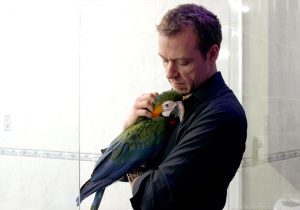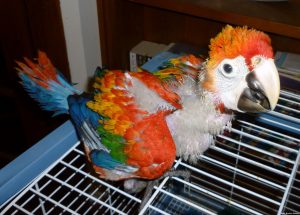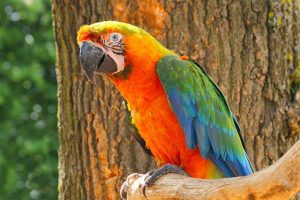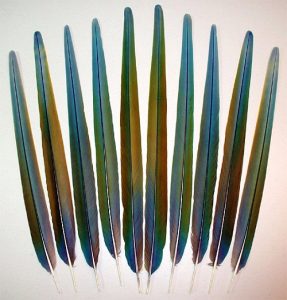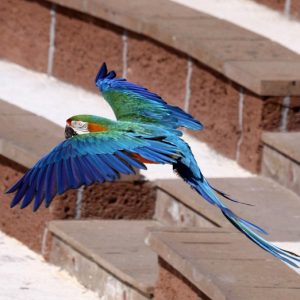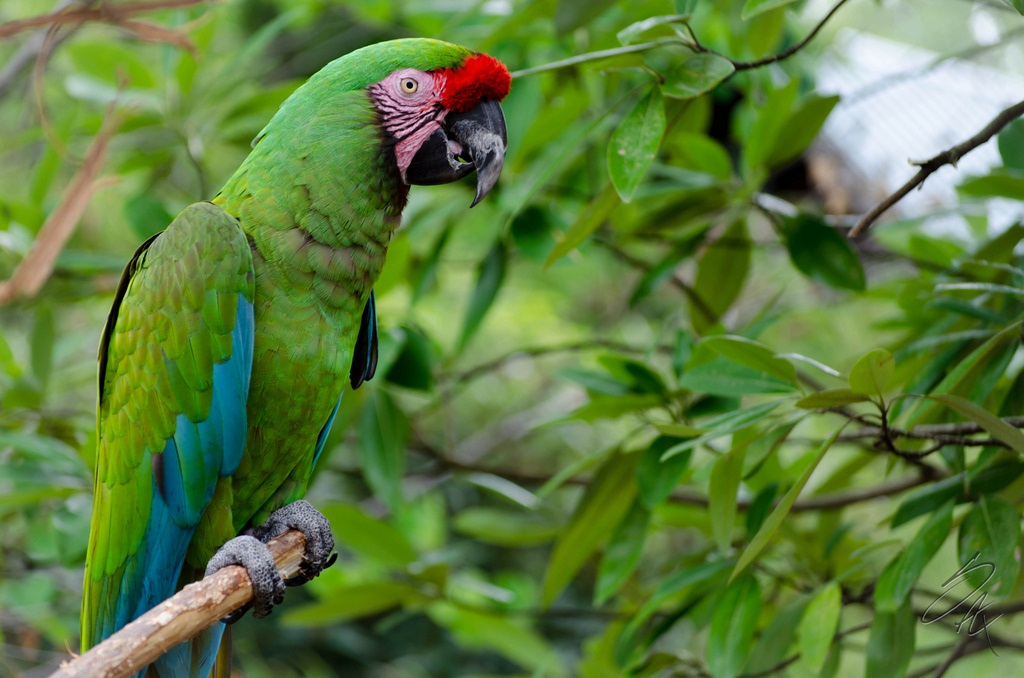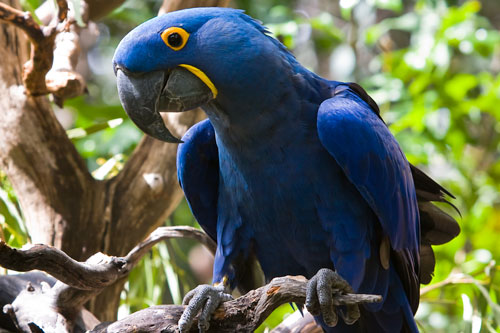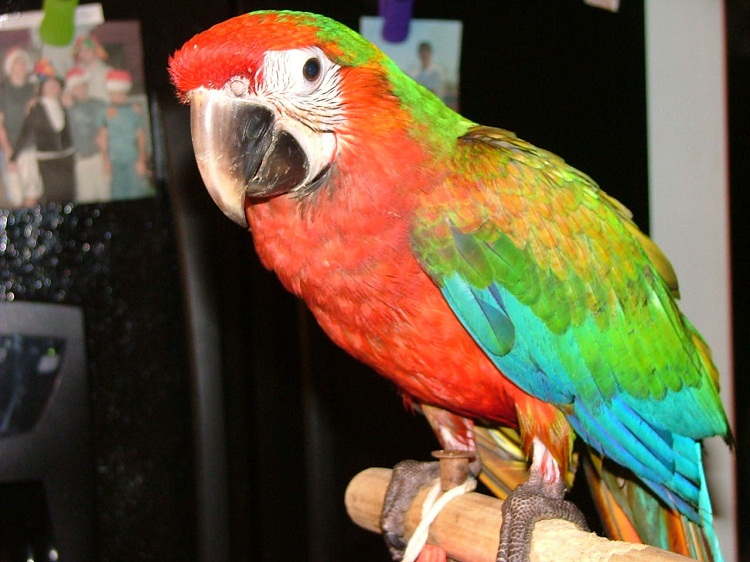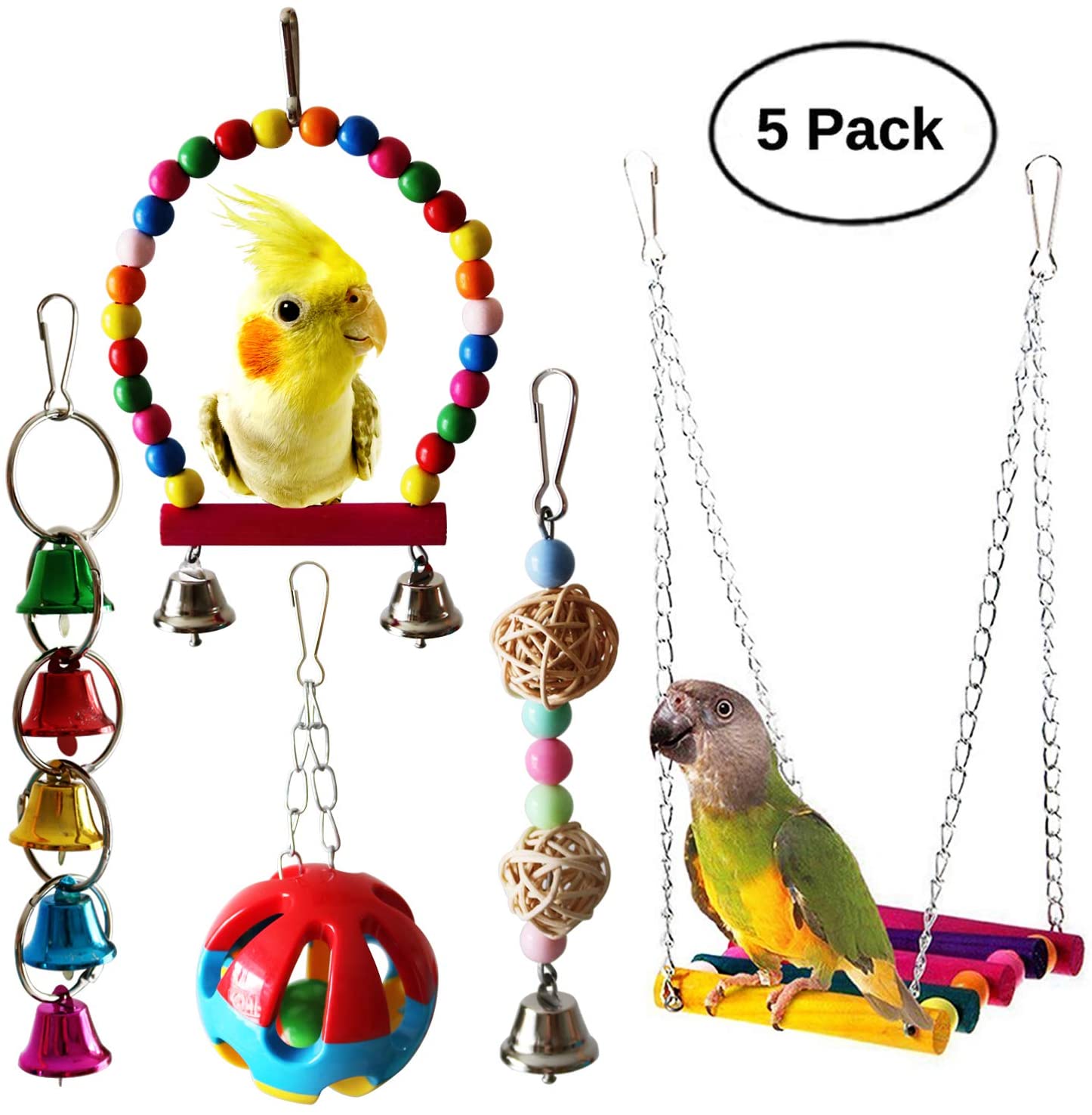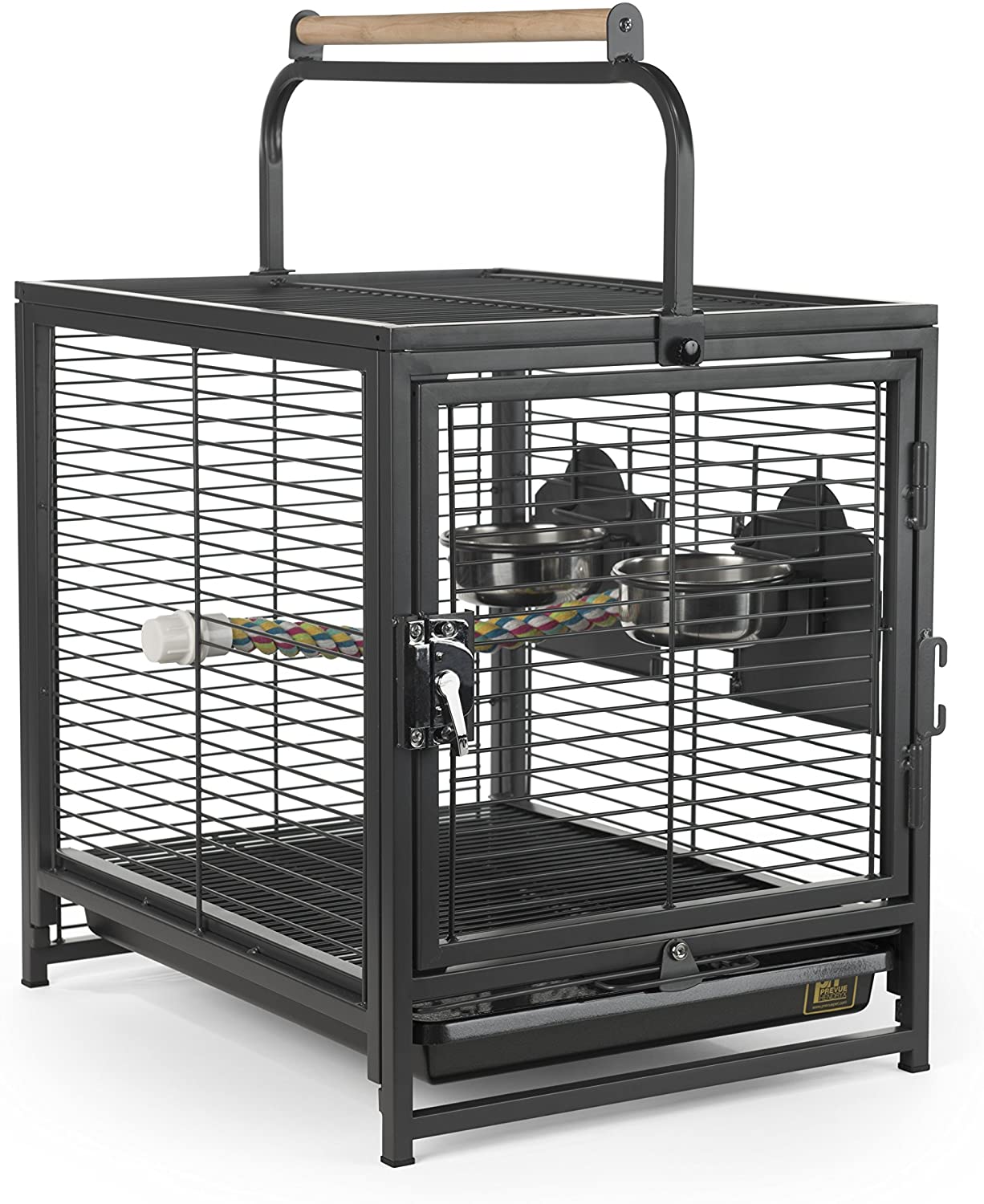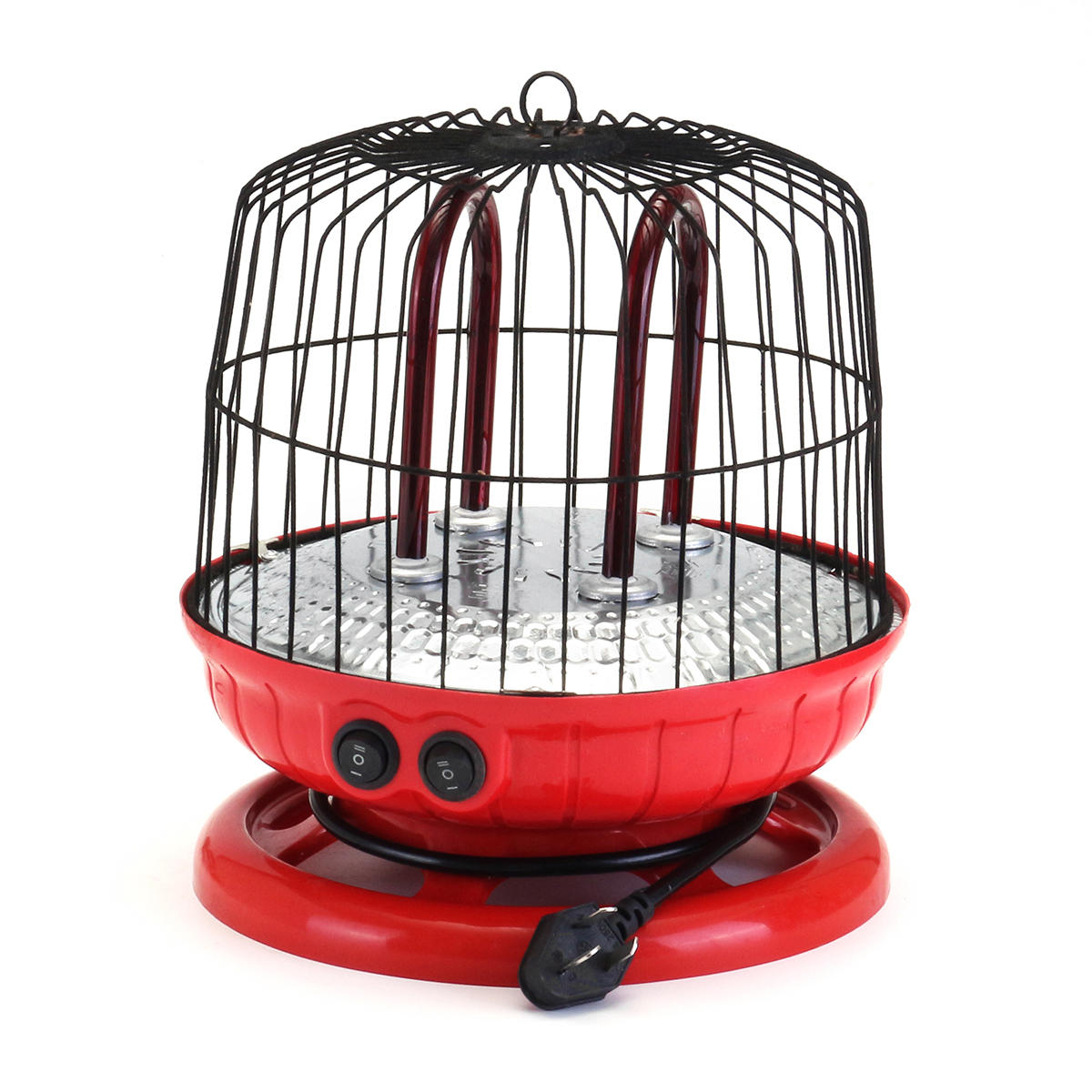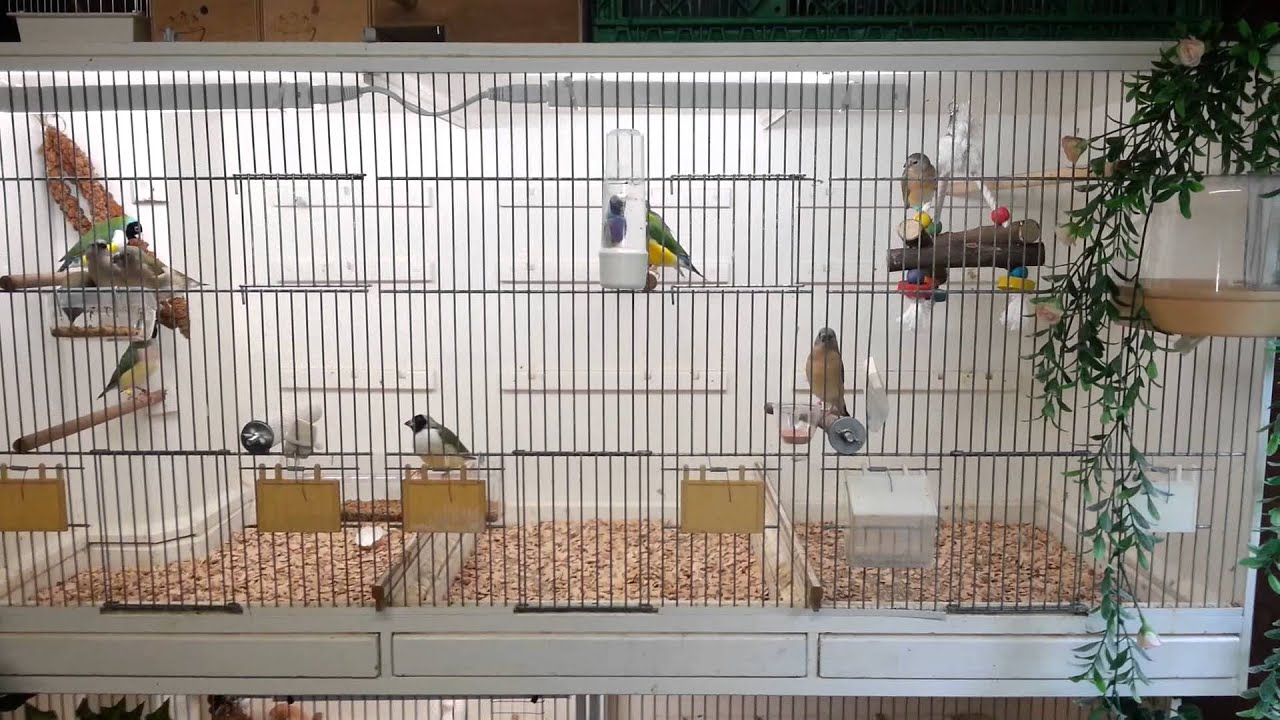Catalina macaw, scientifically known as (ara ararauna X ara macao), is a strikingly beautiful hybrid bird owing its exquisiteness to its parents, the scarlet macaw and the blue and gold macaw. Although the coloration of this bird varies from generation to generation, all of them are a riot of colors.
Quick Information |
|
| Also known as | Rainbow Macaw(in Australia only) |
| Size | 34-35 inches ( 86-89 cm) |
| Wingspan | 40-45 inches |
| Weight | 2-3 lbs |
| Color | Orange-red head and chest, green and blue wings, pinkish white chin with black patches around it, gray beak and legs. |
| Sounds & calls | Screeching and screaming |
| Clutch | 2-3 eggs |
| Lifespan | 50-60 years |
As Pets
Catalina macaws are extremely jovial, charming and energetic, which make them an ideal pet for bird lovers. But before owning it, ensure that you have plenty of time, experience, and patience to raise a baby macaw, as these birds are noisy and demanding.
Housing
Arrange a well-built cage made of powder coated metal, sizing 40 x 30 x 69 inches with a bar spacing of 1 ½ inches. If possible, place manzanita perches, chewable toys to satisfy its chewing proclivity.
You might place a playpen for your bird away from this cage for its enrichment.
Temperature
Catalina macaws thrive well in between 60°F-70°F. Although some have the capacity to withstand even lower temperatures, it is only for a short period. If the weather is too sunny, make sure to provide a shade for your pet.
Temperament
Catalina macaws are blessed with characteristics of both scarlet macaws and blue and gold macaws. While the former one has a jocund and energetic personality, the latter one is comparatively timid and docile. So, you can expect a fantastic fusion of these two types of macaws in your pet.
This highly intelligent bird receives training well from its owner and quickly makes a bond with the individual. Due to its inquisitiveness and imitating nature, it learns words quickly.
It turns depressed in a lack of attention and care; sometimes it is reflected through its aggressive nature, and it may end up biting and hurting others.
Feeding
Commercially available macaw pellet mix, vegetables, brown rice, nuts, and seeds are good for your pet. Do not give it chocolate, avocado, and raw meat. Supply of fresh water is also necessary.
Care
Make it familiar with all your house members gradually, so that it recognizes all, instead of bonding with only one. Also, let it out of the cage and play for 2-4 hours daily to keep it active.
Cleaning of the cage and associated stuff like toys is mandatory to maintain a hygienic ambiance.
Health problems
Proventricular dilation disease, psittacosis, kidney disease, papillomas, infections, beak malformations are common diseases that are likely to plague your macaw. You should be watchful of symptoms like feather picking, sagging body, swelling eyelids, and watery eyes as they can be precursors of serious health problems. Take your pet to a professional vet if such situation arises.
Price
You can get this bird from breeders within $1,500 – $1,700, while in pet stores it is available in $1,700 – $2,000.
Interesting facts
- Catalina macaws are often confused with harlequin macaws, because of their physical similarities.
- Most of the time the mother is a blue and gold macaw and father is a scarlet macaw as female scarlet macaws are rarely found.
- Recently a few breeders have successfully come up with the second generation of this bird by breeding a catalina macaw pair.
Video: Catalina Macaw Talking
References:



